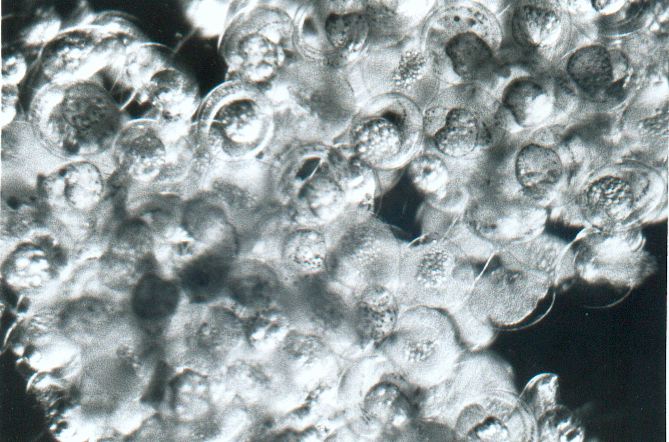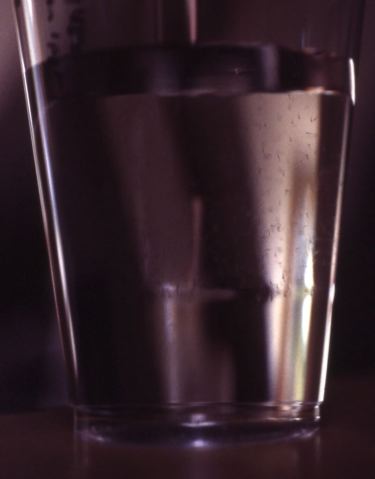K.N.I. Bell: Tropical Anadromous Gobies -- Sicydium & others
Larvae and early behaviour
Porfirio Manacop* was the first person to detect any goby larvae in
fresh waters.
*Manacop, P. R. 1953. The life history and habits of the goby,
Sicyopterus extraneus Herre (añga) Gobiidae with an account of the goby-fry
fishery of Cagayan River, Oriental Misamis [Province, Mindanao, Philippines].
Philippine
J. Fish.
2: 1-60.
Other workers in his area were reluctant to accept his findings
and treated it as error. The next seen sicydiine larvae were from my aquarium
specimens in 1970, when I was not long out of high school. Larvae were next
found from more captive spawnings: Foster and Fuiman found larvae of Evorthodus
lyricus,
and Todd found larvae of an eleotrid.
On July 4 1989 I found the first Caribbean
river goby larvae in situ, from plankton samples taken in the
Check Hall river at about 400 m elevation, and the first larvae found in
situ since
Manacop's work. That showed that the often-held presumption of catadromy
in these fishes was in error, and it began a sampling program that sampled
rheoplankton for about 20 months in Dominica,
with other work, e.g. on
returning
(recruiting)
gobies. The rheoplankton
work showed that most gobies spawn pan-seasonally, and also recruit pan-seasonally.
One spawning of a 40-50 mm female contains about 30,000 eggs.
 |
<-- A
very small sample of a nest; larvae are not all at the same stage, and typically
do not hatch all at once, but over a few hours. Eggs are pyriform (shaped like
a lightbulb, or like the Apollo capsule) are about 0.5 mm diameter, and,
typically of gobies, are attached by filaments to a substrate. Some of
these larvae could hatch if stimulated (e.g. by
light),
but would
still
require
a
few hours to
attain the normal larval length of about 1.8mm. If very premature, hatching
occurs before larvae can straighten out, and they swim helically (inefficient
of course) for a while. Premature hatching could help save larvae following
disturbance; at least larvae would be dispersed and predators would get
fewer of them,
and if the
hatching had been stimulated by conditions related to a flood, useful transport
downstream could still occur.
|
In aquarium conditions, females can spawn at intervals of only a few weeks
or less. As shown in a neat paper by Burt et al*, the annual reproductive
output of fishes that spawn only once per year is limited to about 30% of body
mass; but fish that spawn much more frequently can have annual reproductive
output >> body mass.
*Burt, A., Kramer, D. L., Nakatsuru, K. and
Spry, C. 1988. The tempo of reproduction in Hyphessorbrycon pulchripinnis (Characidae),
with a discussion on the biology
of 'multiple spawning' in fishes. Env. Biol. Fish. 22: 15-27.

Sicydium punctatum larva about 3 d post-hatching. (incubation
time is ~1-1.5 day); transmitted light, with 2 otoliths visible in sac
behind eye; "fluor" pigments show as dark with transmitted light. Below:
similar developmental stage, but with oblique lighting and dark field,
showing the "fluor" yellow-green (the photo shows it as yellow, but it
is a fluorescein-like colour) pigment pattern
characteristic
of Sicydium punctatum. I show it in horizontal orientation but it
would at this stage
still
be
alternating
sinking (head down) and swimming (head up). Under anaesthesis with 2-phenoxyethanol
the "fluor" pigment bodies become strand-like (anterior-posterior).

|
|
Larval behaviour
 |
<-- plastic glass with halocline (seawater below, fresh
above, mixture zone shows as an optical distortion), and Sicydium larvae
avoiding full seawater (they are very small, just long dots, above the
seawater).
Typically, fish larvae have been thought to sink to wherever
they are neutrally bouyant. This is not necessarily the case, as shown
(for the first time) by these fish; Sicydium punctatum larvae are
the first fish larvae ever shown to actively choose a salinity range.
[paper] Larvae hatch and then commence swimming
up, sinking down, swimming up, drifting down, etc., and all the while
they
are carried
by the stream to the sea.
The behaviour had profound implications for early life history, and
related experiments showed that they could not survive in fresh water more
than a few days, nor could they survive full seawater as long as they could
in a halocline where they could occupy salinities less than about 15
ppt.
This was shown for Sicydium punctatum but applies for anadromous
gobies generally.
|



